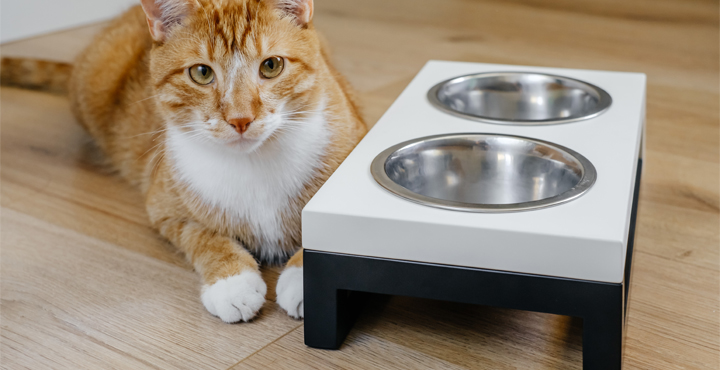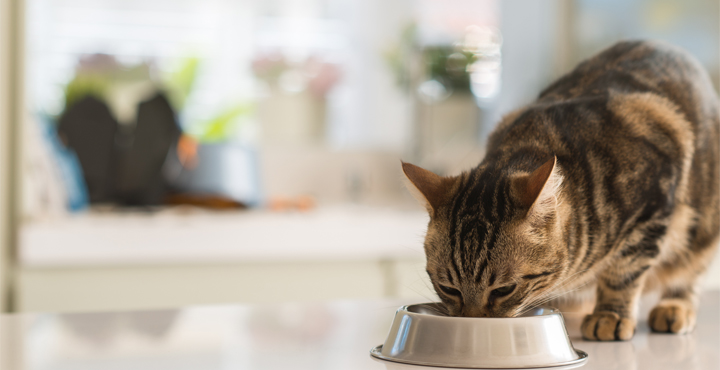
Giving your cat treats can be great for feline friendship building and works well when training cats. However, it can be difficult to navigate quantity and timing, and issues like treat addiction and obesity can become serious problems that are all-too common. In this article, Whiskas answers the question how many treats should I give my cat and offers tips on healthy treat feeding habits.
How many cat treats is too much?
Cat treats can include cat milk, catnip, cooked meat or fish, catnip and biscuit treats.
Treats should only make up five to ten percent of your cat’s required daily calorie intake. This will depend on your cat’s age, breed, health conditions, and level of fitness. For example, highly active and healthy kittens can have more treats than less active older cats . Usually store-bought cat treats will have serving recommendations. You can find out exactly how many calories your cat needs according to their weight, health conditions and breed by visiting a vet.
Signs that your cat is eating too many treats include skin reactions, foaming at the mouth, vomiting, gas, diarrhoea or constipation and refusal to eat their usual cat food meal.
If you are worried about feeding your cat too many treats or they have food allergies, you can try using a cat food with a different texture than their usual one. An example is using dry cat food or kibble if your cat usually only eats wet cat food.
Can too many cat treats be harmful?
Too many cat treats can lead to obesity in cats, due to the high calorie content, and digestive problems such as vomiting or diarrhoea. Filling up on too many treats also means your cat is not getting the required nutrients, vitamins and minerals from their nutritionally balanced cat food. Keep in mind that treats should only complement your cat’s main meals, not replace them.
- Too much human food
While your cat’s sweet begging eyes are hard to resist, feeding them too many titbits of human food can encourage them to steal from the kitchen or table, increasing the risk of eating a toxic food. Also, foods like cow’s milk and dairy products can be harmful since most adult cats are lactose intolerant and do not benefit from milk. Similarly, raw fish is not a safe option for cats, as it can pose health risks. Read more about which human foods are poisonous to cats here. - Too many catnip treats
When it comes to giving your cat catnip as a treat, remember it is a natural plant and not addictive; but if your cat eats too much catnip, vomiting and diarrhoea can ensue. If your cat eats too much catnip, remove it and they should be able to recover given time and care. You should also be aware that too much frequent exposure to catnip can dull your cat’s response to it. - Too many biscuit treats
Too many biscuit treats that are not ‘complete and balanced’ will dilute your cat’s daily nutrient intake. Cat treats high in sodium/salt can cause your cat to drink excessively. If they are high in calories and/or fat, your cat could become overweight and develop health problems such as bladder stones, skin infections, osteoarthritis, heart disease, diabetes, liver disease and cancer.
Contact a vet immediately if your cat displays any serious reactions or worrying symptoms after eating cat treats.
How many treats should a cat have a day?
Treats should generally be reserved for rewarding good behaviour, cat training or complementing your cat’s normal food, although there are also treats designed to have health benefits such as reducing tartar building up on teeth or hairballs in the stomach. Remember, treats should only take up ten percent of your cat’s daily required calories intake. Read packaging labels for serving recommendations and check in with your vet to find out exactly how much to treat your cat.
A healthy cat of average weight can have up to 12 Whiskas® Temptations Adult Cat treats per day. Feed up to 16 Whiskas® Dentabites Cat Treats, or feed up to ten Whiskas® Anti-Hairball Cat Treats.
- When feeding the maximum number of treats
To keep your cat active when feeding the maximum number of treats per day, mix cat treats into playtime. For example, you can hide treats around the home to stimulate your cats natural hunting instincts, attach them to the end of a toy to play chase or use an interactive treat dispensing toy. - When not to treat
Avoid using treats to reinforce bad behaviours including excessive meowing, clawing or biting which can also be signs of treat addiction. Nor should they be used for relieving stress, because your cat can develop an unhealthy coping mechanism for stress as a result.
How many treats a day can you give a kitten?
Kittens are ready for treats when their teeth have grown in and they’ve already been weaned onto solid foods. It’s an excellent time to use treats for training a kitten and for rewarding good behaviour. Read packaging labels for serving recommendations and check with your vet to find out exactly how many treats your kitten can have daily. For example, you can feed a healthy kitten up to 18 Whiskas® Kitten Milky Treats.
Treat addiction and obesity can become serious problems that are all-too-common in cats.
The amount of treats you give your cat depends on a few factors. You can learn about them here.







